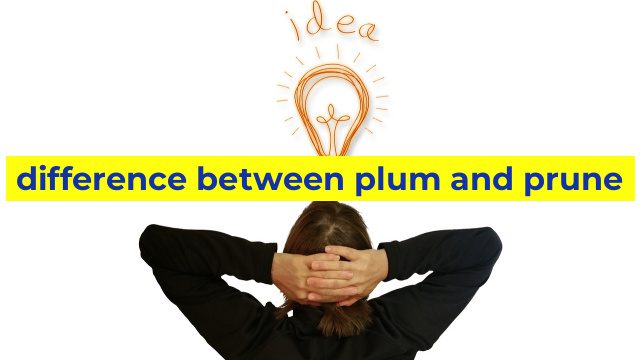The Difference Between Plum and Prune: Which One Should You Choose?
When it comes to fruit selection, it can be easy to get confused between similar-looking options, like plums and prunes. Although these two fruits may be related, they have some differences that set them apart. In this article, we’ll break down the similarities and differences between plum and prune, so you can figure out which one is best for your diet.
What is a Plum?
A plum is a type of stone fruit that grows on trees in the genus Prunus. Plums are typically round or oblong in shape, with smooth skin that can range from yellow to purple-blue. They have a juicy and sweet flesh, often enjoyed fresh or cooked. Plums are an excellent source of vitamin C, potassium, and dietary fiber.
What is a Prune?
A prune is the dried form of a plum. Prunes are created by drying plums in the sun or through dehydration. As they lose water, they become more concentrated and sweet. Prunes are smaller and sweeter than fresh plums, with a wrinkled skin and a chewy texture. Prunes are often used as a natural laxative due to their high fiber content, which promotes healthy bowel movements.
The Main Differences Between Plum and Prune
1. Freshness: The most apparent difference between plum and prune is their freshness. Plums are relatively fresh fruits, while prunes are dried versions of plums. Plums have a juicy texture and are typically eaten fresh or used in baking.
2. Texture: The texture also differs between plum and prune. Plums are juicy with a fleshy pulp, while prunes are chewy with a wrinkled skin. Prunes are often used in baking or rehydrated before eating.
3. Nutritional Properties: Although plum and prune have similar nutritional values, prunes contain more fiber and have a higher concentration of vitamins and minerals than fresh plums. Prunes also have a lower glycemic index than fresh plums, making them a good option for those watching their blood sugar levels.
Bottom Line
Both plum and prune offer various health benefits, making them excellent options for a nutritious diet. Plums are excellent sources of vitamin C, potassium, and dietary fiber, whereas prunes offer higher fiber content, vitamins, and minerals. Both are healthy alternatives, but choosing one over the other mostly depends on personal taste and preference. Whether you prefer fresh and juicy or dried and chewy, both plum and prune can promote healthy living.
Table difference between plum and prune
| Plum | Prune |
|---|---|
| A type of fruit | A dried plum |
| Typically eaten fresh | Can be eaten fresh, but often used for making prunes |
| Smooth, shiny skin | Wrinkled skin due to drying |
| Sweet or tart flavor | Sweet flavor |
| Various colors including red, purple or yellow | Dark purple or black color |

